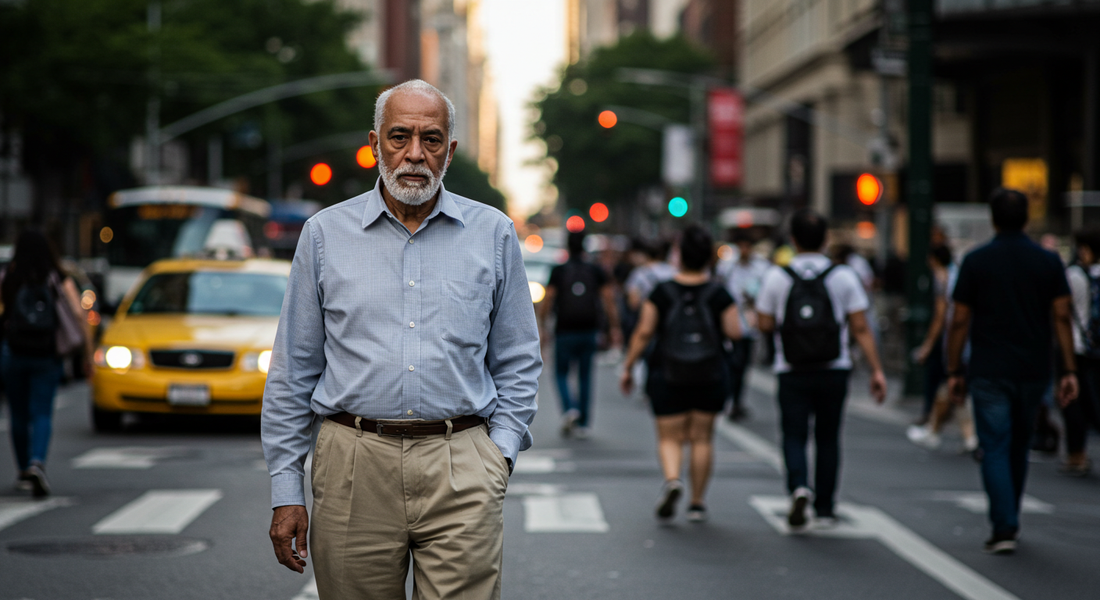
The Gray Man Theory: How to Blend In and Avoid Attention in a Crisis
Share

In a crisis, the person with the most gear is not always the most prepared. The old proverb, "the nail that sticks out gets hammered down," is a harsh reality in a survival situation. This is the core of the Gray Man Theory: the art of being invisible in plain sight. It's not about being a ghost; it's about being so average, so unremarkable, and so uninteresting that you are completely overlooked. In a crisis where resources are scarce and desperation is high, being the person who looks the most prepared can make you the first target. Learning how to blend in survival situations is a critical and often overlooked skill.
Appearance and Clothing
The first step to becoming a Gray Man is to shed any visual indicators that you are prepared or possess valuable resources.
-
Avoid the "Tactical" Look: Ditch the camouflage pants, military-style boots, and anything covered in MOLLE webbing. This type of clothing acts as a uniform that screams "I have gear, I have supplies, I have training." It makes you a magnet for both the desperate and the predatory.
-
Choose Neutral and Common Styles: Your goal is to look like everyone else, only more forgettable. Opt for common, neutral-colored clothing. Think gray hoodies, blue jeans, simple sneakers, and a plain baseball cap. Your clothing should be functional and durable but utterly boring. Avoid bright colors and prominent brand logos.
Gear and Equipment
Your gear should follow the same understated philosophy as your clothing. This is the essence of low profile EDC.
-
Use a Common Backpack: A 5.11 Rush backpack covered in patches and MOLLE attachments is a huge red flag. Instead, choose a backpack that is common for your environment. A simple JanSport or a generic hiking daypack from a big-box store is perfect. It allows you to carry all your essential gear without advertising its contents. The best bug out bag is the one nobody notices.
-
Keep Your EDC Discreet: Your Everyday Carry should be just as low-profile. A large, clipped knife on your pocket is a signal. A smaller, more discreet multi-tool in your pocket is not. Think about how your gear looks to an outside observer and prioritize function over "tacticool" aesthetics.
Behavior and Mindset
This is the most important and most difficult part of the Gray Man Theory. It's not just about what you wear, but how you act.
-
Situational Awareness without Paranoia: You must be aware of your surroundings—who is around you, what are the potential threats, what are the escape routes—but you must do so without looking paranoid. Avoid constantly scanning the room or looking over your shoulder. Practice observing your environment in a calm, natural way.
-
Move with Purpose, Not Panic: In a crowd, the people who stand out are the ones who are either panicking (running, shouting) or look completely lost and victim-like. The Gray Man moves with a quiet purpose. You should walk at a steady, average pace, as if you know exactly where you're going, even if you don't.
-
Avoid Eye Contact and Confrontation: Don't engage in arguments or draw attention to yourself. Avoid making direct, prolonged eye contact with people, which can be interpreted as a challenge. Your goal is to be a non-entity, someone not worth a second glance. This is a key part of avoiding attention shtf.
Conclusion: A Tool, Not an Identity
The Gray Man strategy is a tool, not a permanent identity. It is a conscious choice to be invisible when being visible is a liability. There may come a time when you need to take charge, render aid, or defend yourself, and in those moments, you will have to step out of the gray. The true skill is in the wisdom to know when to blend in and when to act. By mastering the art of being unnoticeable, you give yourself the freedom and safety to make that choice on your own terms.
